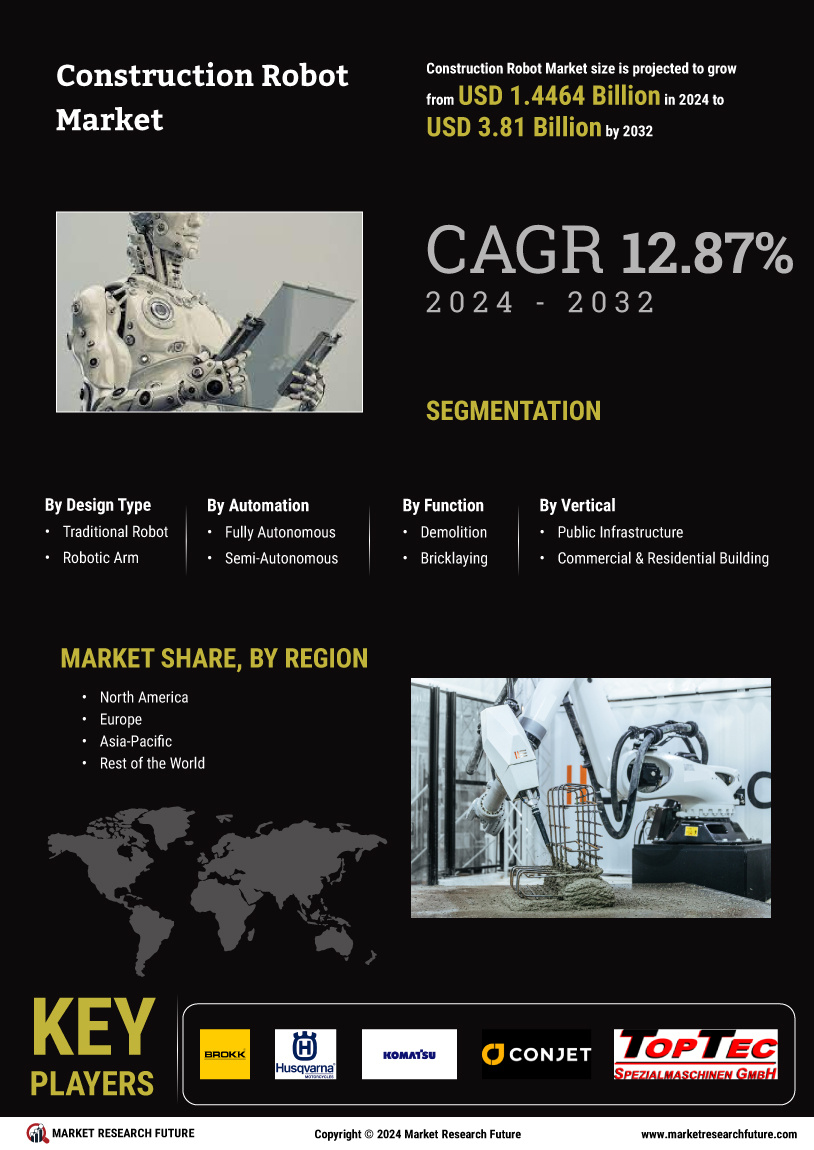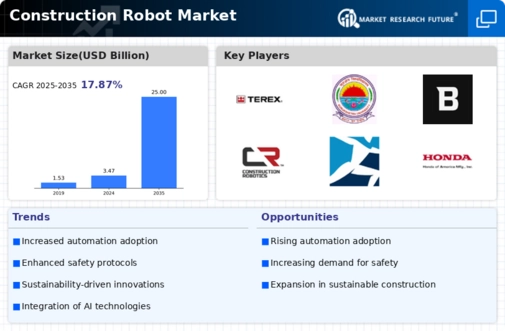The Construction Robot Market is currently characterized by a dynamic competitive landscape, driven by technological advancements and increasing demand for automation in construction processes. Key players such as Boston Dynamics (US), Built Robotics (US), and Komatsu (JP) are at the forefront, each adopting distinct strategies to enhance their market positioning. Boston Dynamics (US) focuses on innovation, particularly in robotics mobility and manipulation, while Built Robotics (US) emphasizes the integration of AI and machine learning into their autonomous construction equipment. Komatsu (JP), on the other hand, is leveraging its extensive experience in heavy machinery to develop smart construction solutions, indicating a trend towards digital transformation across the sector. Collectively, these strategies contribute to a competitive environment that is increasingly reliant on technological prowess and operational efficiency.
In terms of business tactics, companies are localizing manufacturing and optimizing supply chains to enhance responsiveness to market demands. The Construction Robot Market appears moderately fragmented, with a mix of established players and emerging startups. This structure allows for a diverse range of innovations and solutions, although the influence of key players like KUKA (DE) and Cyberdyne (JP) remains substantial, as they continue to set benchmarks in robotics technology and automation.
In August 2025, Boston Dynamics (US) announced a partnership with a leading construction firm to deploy its Spot robot for site inspections and data collection. This strategic move not only enhances the operational capabilities of construction sites but also positions Boston Dynamics as a leader in integrating robotics into everyday construction tasks. The partnership underscores the growing recognition of robotics as a vital component in improving efficiency and safety in construction.
Similarly, in September 2025, Built Robotics (US) unveiled its latest autonomous excavator, which incorporates advanced AI algorithms for real-time decision-making. This development is significant as it reflects the company's commitment to pushing the boundaries of automation in construction, potentially reducing labor costs and increasing productivity on job sites. The introduction of such technology may also influence competitors to accelerate their own innovation cycles.
In July 2025, Komatsu (JP) launched a new suite of smart construction solutions that utilize IoT technology to enhance equipment monitoring and maintenance. This initiative is crucial as it aligns with the industry's shift towards data-driven decision-making, allowing for predictive maintenance and improved operational efficiency. Komatsu's focus on smart technology not only strengthens its market position but also sets a precedent for other players in the industry to follow.
As of October 2025, the Construction Robot Market is witnessing trends such as digitalization, sustainability, and AI integration, which are reshaping competitive dynamics. Strategic alliances are becoming increasingly important, as companies recognize the value of collaboration in driving innovation. Looking ahead, competitive differentiation is likely to evolve from traditional price-based competition to a focus on technological innovation, reliability in supply chains, and the ability to deliver sustainable solutions. This shift indicates a maturation of the market, where the emphasis will be on creating value through advanced technologies and strategic partnerships.


















Leave a Comment